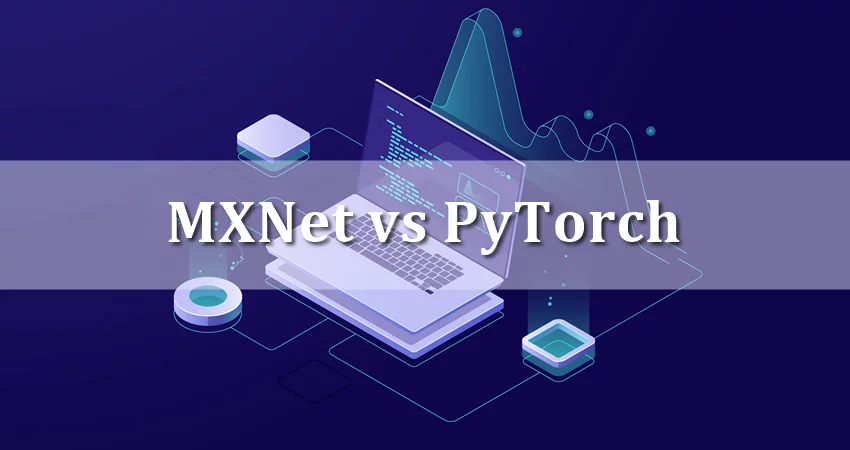The Usage of Deep Learning Frameworks
Deep learning rapidly grew in popularity as a subset of machine learning that learns through Artificial Neural Networks.
Using the vast data, it educates its deep neural networks to attain better accuracy and results without a human programmer. And so, a deep learning framework
- Provides developers with a more easy and quick building of deep learning models
- Frees them from writing hundreds of lines of codes and going into the details of underlying algorithms
- Makes a better path with its pre-built and optimized elements collection for defining models.
Deep learning frameworks such as Caffe, Deeplearning4j, Keras, MXNet, PyTorch, and Tensorflow rely upon cuDNN, NCCL, DALI, or other types of libraries for a high-performance multi-GPU accelerated training.
NGC is a GPU-Optimized software hub that simplifies high-performance computing, deep learning, and machine learning structure and workflows.
This is becoming a tremendous help to developers, researchers, and data scientists by eliminating the need to manage or build DL frameworks from the source.
MXNet, PyTorch, and TensorFlow; these frameworks are three of the most popularly used DL Frameworks with Google’s TensorFlow at the very top.
A Scalable Deep Learning Framework- MXNet
MXNet, with Apache as its creator, is an ultra-scalable, flexible and deep learning framework that supports multiple languages (C++, Python, R, Julia, JavaScript, Scala, Go, and Perl) and helps train, and deploy deep neural networks.
It gifts the users with the ability to code in a variety of programming languages without the need of learning something new from scratch.
With high performing MXNet, Gluon API supports work with a dynamic graph. Announced by AWS and Microsoft, Gluon is a new open-source DL interface for an easier and faster ML model building without affecting its performance.
Machine learning models through Gluon can be defined and manipulated just like any other data structure and hence is easy to work with for developers to get started with via the cloud or others.
AWS, Intel, and Microsoft have adopted MXNet.
Organizations use the MXNet framework because of its scalability, imaging, natural language processing, forecasting, and speech/handwriting recognition.
Furthermore, MXNet features advanced GPU support, easy model serving, and high-performance imperative API.
MXNet supports Long Short-Term Memory (LSTM) networks along with both Recurrent Neural Networks (RNN) and Convolutional Neural Networks (CNNs). Multi-GPU support makes it impossible to ignore MXNet.
But since MXNet is a relatively newer framework, it has lesser support from research communities and many.
A Powerful Open Source Deep Learning Library- PyTorch or Torch
Written in Python, C++, and CUDA, PyTorch is one of the most popular machine learning, open-source library. CUDA ensures less time for running the code with efficiency.
With Facebook as its developer, Torch is also used by many others like Twitter and Salesforce.
It has a very easy to use API with strong python-support that smoothly integrates with the python data science stack with NLP applications.
Furthermore, for situations where it’s not possible to know how much storage is needed for a neural network, the PyTorch framework includes building computational graphs.
PyTorch is still a developing platform adopted by many researchers and developers because of its many merits.
Those include its simplified preprocessors, strong GPU acceleration, easy to build models, and to simplify complex graphs.
PyTorch works on dynamic graphs on runtime to build DL applications, unlike other frameworks where computing graphs need to be built beforehand.
PyTorch features the processing of Tensor computing with a strong acceleration of GPU and is highly transparent and accessible.
Though MXNet has the best in training performance on small images, however when it comes to a relatively larger dataset like ImageNet and COCO2017, TensorFlow and PyTorch operate at slightly faster training speed.
Followed by PyTorch, and MXNet, TensorFlow, by Google, has been the most widely used machine learning framework with GPU support.
Even then, the inherent differences of their designs, architectures, and implementations make them different from each other in their performance.
This is the reason why it becomes quite hard to choose a framework that would be perfect for your deep learning project.
Major factors that you should consider before choosing a Deep Learning Framework are:
- Programming language.
- Neural networks type requirements.
- Coding needs and ease of programming.
- Budgeting, and tools needed (like for debugging).
- Level of requirements for simplicity, training speed, and flexibility to integrate.
- Translation, recognition, and detection requirements.
You May Also Like to Read-
PyPy vs. Cython: Difference Between The Two Explained

